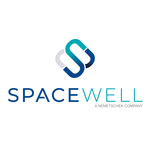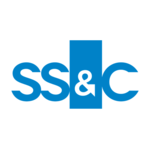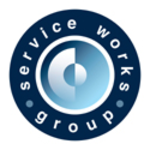Description

Asset Mapping

Spacewell
Comprehensive Overview: Asset Mapping vs Spacewell
Asset Mapping and Spacewell are two different platforms that provide technology solutions for managing spaces and assets, with a focus on enhancing efficiency and productivity for businesses.
Asset Mapping
a) Primary Functions and Target Markets:
- Primary Functions: Asset Mapping provides a platform that focuses on tracking and monitoring assets in real-time. Its services include IoT-enabled asset tracking, visualization on maps or floor plans, environmental monitoring, predictive maintenance, and data analytics. The platform helps in locating assets quickly, understanding asset utilization, and optimizing operations.
- Target Markets: Asset Mapping primarily targets facilities management, healthcare, manufacturing, smart cities, and corporate enterprises that require efficient asset tracking and management functionalities.
b) Market Share and User Base:
- Specific figures on market share and user base may not be publicly available, but the niche focus on IoT and real-time asset tracking provides a potentially robust user base among enterprises that have significant asset management needs. The user base is generally focused on organizations looking to streamline operations with real-time data insights.
c) Key Differentiating Factors:
- Real-time tracking and monitoring capabilities with a strong IoT focus.
- Seamless integration with existing systems and hardware.
- Focus on providing a visual representation of asset data through maps and floor plans.
- The ability to scale and adapt to different industry verticals with customizable solutions.
Spacewell
a) Primary Functions and Target Markets:
- Primary Functions: Spacewell offers integrated workplace management systems (IWMS) with functionalities for space management, facility management, maintenance management, and workplace analytics. Spacewell’s solutions are designed to optimize space usage, enhance productivity, and improve employee engagement.
- Target Markets: Spacewell mainly targets real estate owners, facility managers, and corporate enterprises that need comprehensive solutions for space and facility management, particularly those in sectors like corporate offices, real estate, and public sector organizations.
b) Market Share and User Base:
- Spacewell, being a part of the larger Nemetschek Group, benefits from a significant global footprint, which places it in a strong position within the market. Its broad set of capabilities ensures a substantial user base, especially among large organizations looking for integrated solutions for space and facility management.
c) Key Differentiating Factors:
- Comprehensive IWMS platform that integrates a wide range of facility and space management functions.
- Advanced analytics and reporting tools for space utilization and optimization.
- Strong focus on enhancing user experience and workplace productivity through technology.
- Part of the Nemetschek Group, providing robust support and integration capabilities with other software solutions within the group.
Comparing Asset Mapping and Spacewell
When comparing Asset Mapping and Spacewell, it's important to note that while both aim to enhance operational efficiency, their focus and scope differ:
- Orientation: Asset Mapping is more focused on IoT and real-time asset tracking, targeting industries with specific asset management needs. In contrast, Spacewell offers a broader approach with its IWMS, targeting comprehensive space and facility management.
- Capabilities: Asset Mapping excels in IoT integration and real-time data visualization, while Spacewell provides integrated solutions that encompass space management, maintenance, and analytics in one package.
- Market Position: Spacewell likely enjoys a broader market presence due to its umbrella under the Nemetschek Group, allowing it to leverage additional resources and integration possibilities across various software solutions.
Overall, both platforms provide significant value to their respective markets, with unique features and capabilities catering to different organizational needs.
Contact Info

Year founded :
2012
+44 20 7060 6014
Not Available
United Kingdom
http://www.linkedin.com/company/asset-mapping

Year founded :
2007
+971 4 447 7301
Not Available
United Arab Emirates
http://www.linkedin.com/company/spacewell-interiors
Feature Similarity Breakdown: Asset Mapping, Spacewell
As of my last update, Asset Mapping and Spacewell are both platforms that provide solutions for asset management, smart building management, and facility management. Here's a breakdown of their feature similarities and differences based on their common offerings:
a) Core Features in Common:
-
Asset Tracking and Management:
- Both platforms offer robust asset tracking capabilities, allowing users to monitor and manage assets in real-time. This includes functionality for tracking asset location, utilization, and status.
-
Data Integration:
- They support integration with various data sources and IoT devices. This capability allows for comprehensive monitoring and management of facilities and assets via sensors and other connected devices.
-
Dashboards and Reporting:
- Both provide customizable dashboards that display key performance indicators (KPIs) and generate reports that help in decision-making processes.
-
Space Management:
- Both platforms include features for optimizing the utilization of space, such as space utilization analytics and occupancy monitoring.
-
Mobile Access:
- Mobile applications or interfaces provide on-the-go access to key features, enabling asset or facility managers to stay informed and responsive.
b) User Interface Comparison:
-
Asset Mapping:
- Typically has an intuitive, map-based user interface which provides a visual representation of assets across locations. This map-centric approach can be particularly useful for visualizing spatial data.
-
Spacewell:
- Tends to offer a more traditional dashboard-oriented UI with a strong focus on operational efficiency and facility management. The interface might be more detailed for hands-on management and planning processes.
Both interfaces are designed to provide ease of use, with responsive designs suited for desktop and mobile devices. However, the choice between them often depends on specific needs, such as the preference for map-based visualization or detailed dashboard reports.
c) Unique Features:
-
Asset Mapping:
- Real-time Mapping: Their focus on a real-time map interface provides seamless management and tracking of assets across multiple locations, which can be a distinct advantage for businesses requiring geographical visualization.
- Responsive Notifications: Customizable alerts and notifications relating to asset status changes or anomalies.
-
Spacewell:
- Energy Management: Spacewell offers comprehensive energy management solutions, which include detailed energy consumption analytics and recommendations for reducing energy usage.
- Facility and Maintenance Management: Offers stronger features around facility management, including tenant engagement, maintenance scheduling, and workflow automation for service requests.
In conclusion, while both platforms offer significant overlapping features in asset and space management, differences exist primarily in interface design and specialized functionalities such as map-based visualization for Asset Mapping and comprehensive energy management tools in Spacewell. Your choice may depend on whether your priority is intuitive spatial visualization or integrated operational management.
Features

Not Available

Not Available
Best Fit Use Cases: Asset Mapping, Spacewell
Asset Mapping and Spacewell are both valuable tools in the realm of facility and asset management, but they cater to different needs and scenarios. Here's a breakdown of their best-fit use cases:
Asset Mapping
a) For what types of businesses or projects is Asset Mapping the best choice?
-
Large Enterprises with Extensive Physical Assets: Companies with vast numbers of physical assets spread across multiple locations, such as manufacturing plants, hospitals, or transportation companies, benefit greatly from Asset Mapping. It provides a clear visualization of asset locations, health, and status in real-time.
-
Industries Requiring Real-Time Asset Tracking: Businesses in logistics, utilities, or emergency services that require real-time tracking of equipment and assets to ensure operational efficiency can utilize Asset Mapping for optimal resource allocation.
-
Projects Focusing on Digital Transformation: Organizations embarking on digital transformation projects can leverage Asset Mapping to transition from traditional, paper-based asset tracking to a dynamic, digital format that enhances data-driven decision-making.
c) How do these products cater to different industry verticals or company sizes?
-
Industries: Asset Mapping is essential for sectors like manufacturing, healthcare, logistics, and energy, where asset location and status directly impact productivity and service delivery.
-
Company Sizes: Asset Mapping is suited for medium to large-sized enterprises, due to the scale of assets that can benefit from comprehensive mapping solutions. Smaller companies might find basic asset tracking tools sufficient unless they are rapidly scaling.
Spacewell
b) In what scenarios would Spacewell be the preferred option?
-
Facilities Management and Workplace Optimization: Spacewell is ideal for businesses aiming to optimize workspace usage, enhance employee experience, and improve facilities management through smart building technology.
-
Real Estate and Property Management: Companies dealing in property management or real estate can use Spacewell to manage building portfolios, focusing on maintenance, space utilization, and energy efficiency.
-
Organizations Focusing on Sustainability: Businesses with goals around sustainability and energy efficiency might prefer Spacewell for its capabilities in monitoring and optimizing building energy use and environmental impact.
d) How do these products cater to different industry verticals or company sizes?
-
Industries: Spacewell caters to real estate, corporate offices, educational institutions, and any industry where space utilization, energy management, and facilities maintenance are key concerns.
-
Company Sizes: Spacewell's scalability makes it suitable for a wide range of company sizes – from small businesses operating a few office spaces to large multinational corporations managing numerous buildings worldwide. The platform's modular approach allows companies to tailor the solution to their specific needs and budget constraints.
In summary, Asset Mapping is best for industries with extensive physical assets and real-time tracking needs, while Spacewell excels in facilities management and space optimization across various property-related sectors. Both products offer scalable solutions but address different organizational needs and priorities.
Pricing

Pricing Not Available

Pricing Not Available
Metrics History
Metrics History
Comparing teamSize across companies
Conclusion & Final Verdict: Asset Mapping vs Spacewell
Conclusion and Final Verdict for Asset Mapping vs. Spacewell
When evaluating Asset Mapping and Spacewell, both platforms offer unique features tailored for specific operational needs in asset management and facilities management. As we assess their overall value, a comprehensive understanding of each product’s capabilities, strengths, and weaknesses will aid in determining the most suitable option.
a) Best Overall Value
Considering all factors, Spacewell appears to offer the best overall value for organizations seeking an integrated facilities management solution. It provides a broad range of modules that go beyond asset tracking, including maintenance management, space optimization, and enhanced IoT capabilities, making it a comprehensive choice for users looking for a holistic approach to facilities management.
b) Pros and Cons of Each Product
Asset Mapping
-
Pros:
- Specialized Focus: Asset Mapping excels in providing streamlined asset tracking solutions, focusing specifically on real-time data and geolocation, which is ideal for organizations that prioritize efficient asset utilization and visibility.
- User-Friendly Interface: Known for its intuitive interface, making it easier for users to adopt and navigate quickly without extensive training.
- Scalability: Offers scalable solutions capable of adapting to various organizational sizes and needs.
-
Cons:
- Limited Scope: Primarily focused on asset tracking and may require integration with other platforms for more comprehensive facilities management features.
- Customization Constraints: May not offer as much flexibility in terms of custom modules compared to more robust platforms.
Spacewell
-
Pros:
- Comprehensive Features: Offers a wide variety of solutions beyond asset tracking, including maintenance, workspace management, and IoT integration, which supports a more extensive range of FM needs.
- Advanced Analytics: Provides powerful data analytics and reporting tools, which help in optimizing space utilization and asset efficiency.
- Integration Capabilities: Easily integrates with various IoT systems and other software, enabling seamless operations and maximizing technological investments.
-
Cons:
- Complexity: With its extensive features, the platform might be complex for some users and may require a significant time investment for implementation and training.
- Higher Cost: Generally has a higher price point due to its comprehensive offerings, which might not be feasible for organizations with limited budgets.
c) Recommendations for Users
For users trying to decide between Asset Mapping and Spacewell, several considerations can inform their decision:
-
Identify Core Needs: If your organization primarily needs strong asset tracking capabilities with excellent real-time visibility, then Asset Mapping might be the right fit. However, if your operations require a diverse range of facilities management tasks and robust analytics, Spacewell would likely offer better value.
-
Budget Considerations: Evaluate the budget constraints and the return on investment each solution can offer. While Spacewell provides more features, Asset Mapping could be a cost-effective solution for narrower requirements.
-
Scalability and Growth: Consider the future growth of your organization. If you anticipate needing more integrated facilities management capabilities down the line, investing in Spacewell could provide advantages in the long run.
-
Ease of Implementation: For smaller teams or organizations new to digital FM solutions, Asset Mapping’s simplicity and ease of use could mean a quicker, less resource-intensive implementation.
In summary, the decision between Asset Mapping and Spacewell should be informed by your organization’s specific needs, budget, and growth expectations. Understanding these dynamics will ensure you select a platform that aligns with your operational goals and provides the most significant value.
Add to compare
Add similar companies




